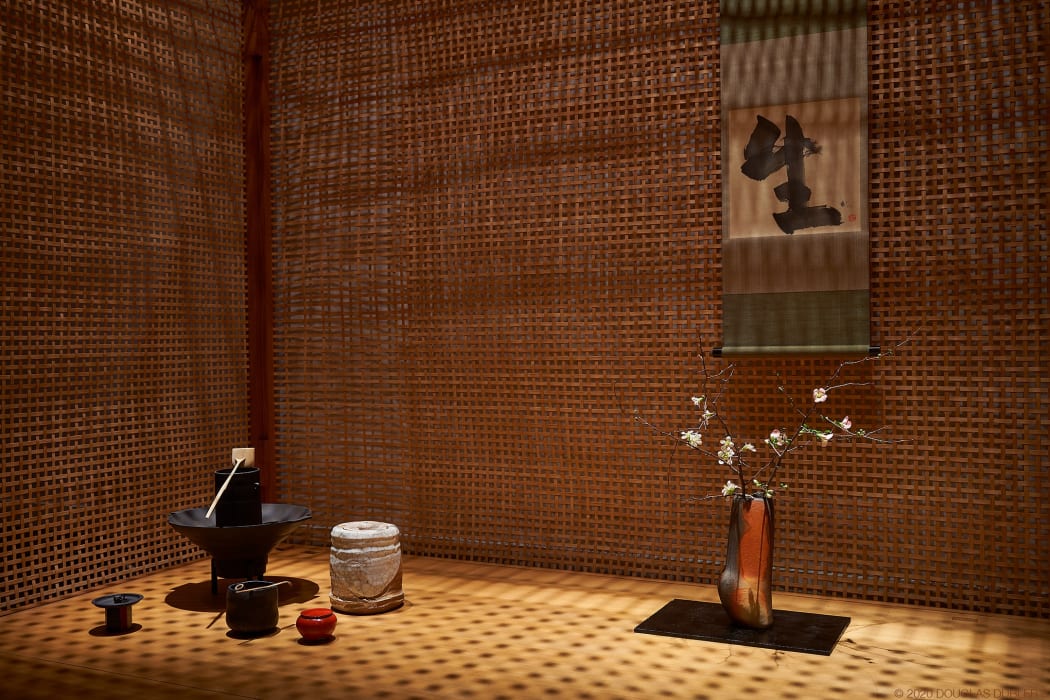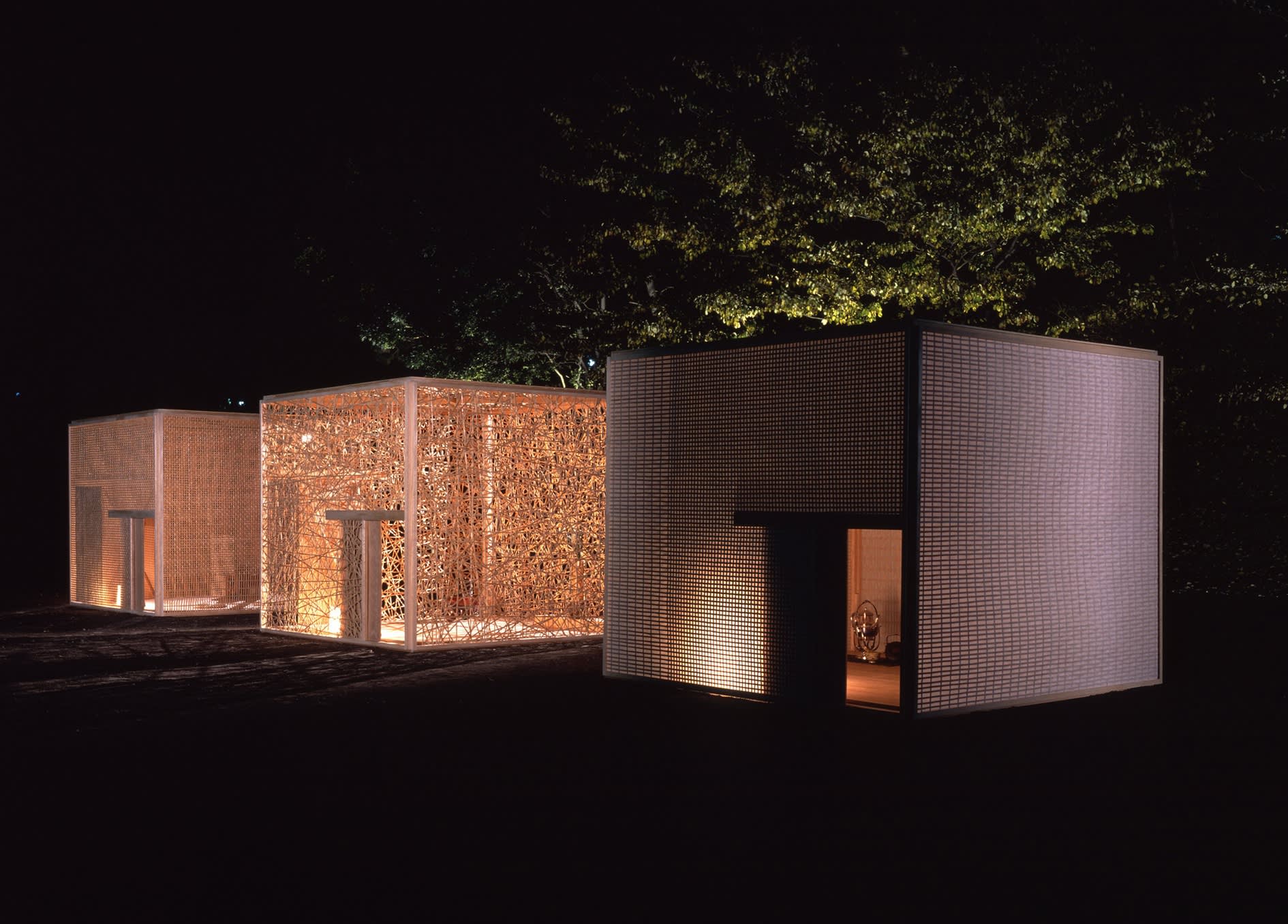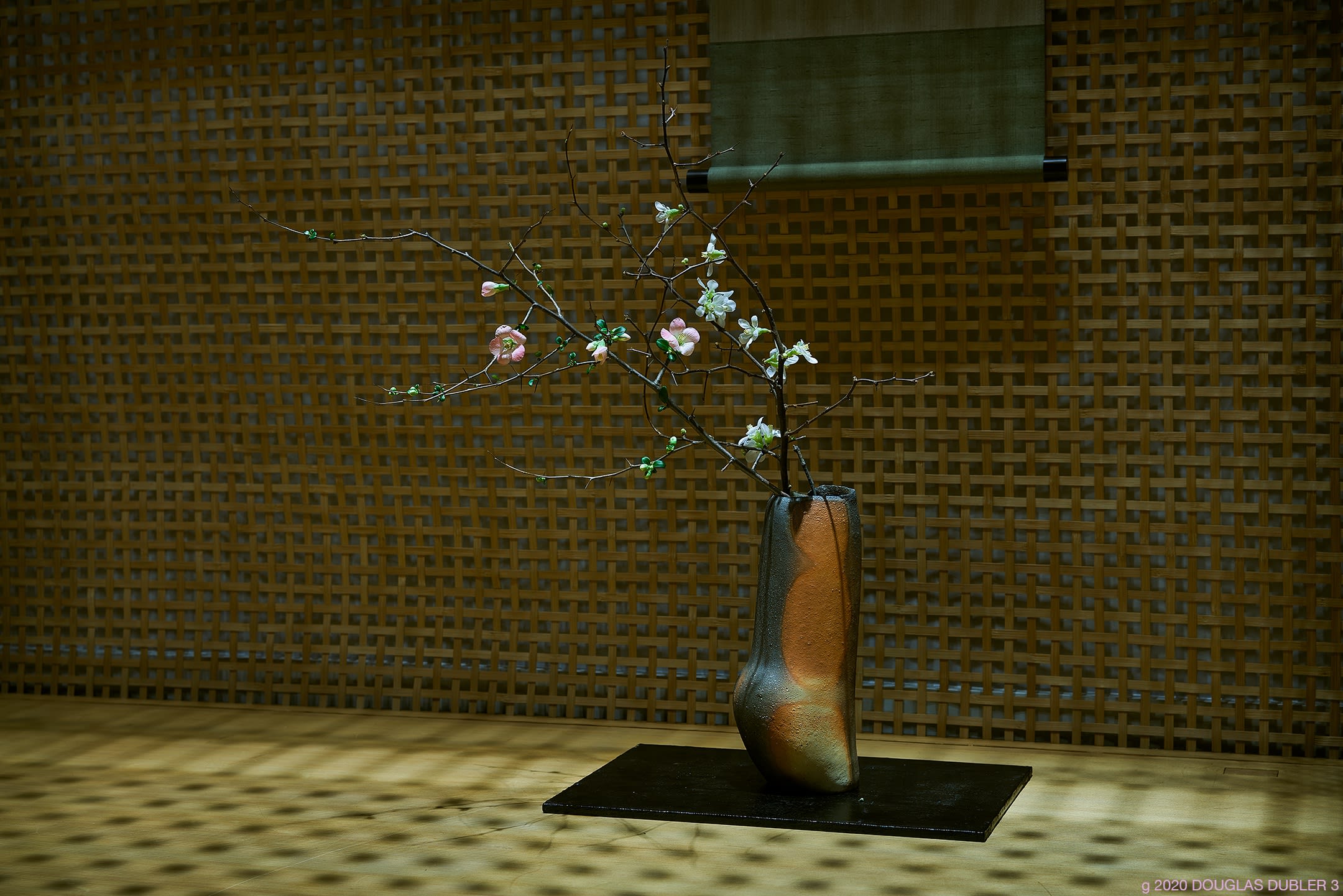
The term Chashitsu茶室, "tea room," is a traditional architectural space used for a tea ceremony (chanoyu.) It came into use during the Edo period (c1600.) Before then, spaces used for tea ceremonies were known as sukiya. This broad translation is "place for tea." They may be located in a Japanese garden, private homes, museums, and parks. A tea house typically features shoji windows, sliding doors of wooden lattice covered in translucent washi paper, tatami mats, and an alcove. While a tea house can be range from a large ten tatami mats or more to 1.75 tatami mats, the average size would allow 4.5 tatami mats. one full tatami mat for the guests, plus a tatami mat called a daime (台目), about 3/4 the length of a full tatami mat, for the portable brazier (furo) or the sunken hearth (ro) to be situated and the host to sit and prepare the tea. The purpose is for the host and guest to join together for the tea ceremony.

Tea houses first appeared in the Sengoku period (mid-15th century to early 17th century.) This was when the central government had almost no political power, the country was in upheaval, and wars and uprisings occurred daily. The samurai soldiers who were clans paid to defend territories adopted the practice of the tea ceremony, which was built mainly by Zen monks. The daimyo or samurai practiced tea which encouraged humility and simplicity. However, among the aristocrats and elite, tea competitions were popular. They would use high-quality utensils, wear elegant clothing, and display sumptuous decorations.
The ritual sometimes begins on the "roji" or 露地, dewy ground, where the guest lays aside his daily cares. Before entering the tea house, guests clean their hands and mouths at a water basin located outside the room. Some buildings contain a crawl space or nijiriguchi, which forces everyone to lower their body in a humble position as they enter the sacred space. Swords and social status were left outside the area.
Shigeru Uchida designed three different structural forms of tea houses: Ji-an, the house of perception; So-an, the home of composition; and Gyo-an, the place of memories. Built-in bamboo and Japanese cypress as the base. They can be dismantled and re-erected in various locations. When one enters the tranquil space, they are gently wrapped like a bird in a nest. The safe space blankets the visitor with a calm and serene atmosphere.
Ippodo Gallery has the privilege to use the Ji'an tea house made by the artist Shigeru Uchida. Born in Yokohama in 1943, Uchida graduated from the Kuwasawa Design School in 1966. In 1970 Uchida started his firm, Uchida Design Studio, and later in 1981 established Studio 80 with Toru Nishioka. As a leading Japanese designer, Uchida has engaged in various design projects such as several interior works, furniture, products, and urban planning in Japan and abroad.

Shigeru Uchida, Tearoom 受庵 (Ji'an) (1993), Japanese cedar, Spruce, Agathis, Bamboo, 200 × 240 × 240 cm
The philosophy behind these furnishings is derived from the traditions of Japanese tea culture. This includes finding calmness in the state of sitting, as the mind focuses on the light and shadows of its immediate surroundings, which the exhibition managed to capture. All materials for a tea ceremony are simple and rustic. Stay tuned for next week's journal to learn more about the utensils necessary to perform the ceremony.
